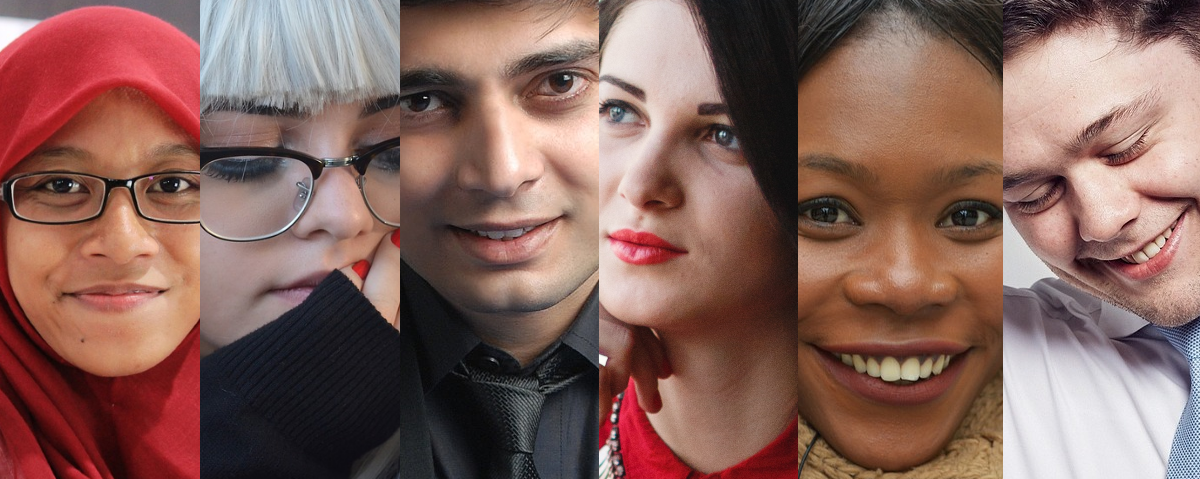How Much Do Graphic Designers Make a Year Uk
Graphic Designer Jobs
Graphic designer jobs… did you know?
Famous graphic designer Milton Glaser once said there are three responses to a piece of design: yes, no, and WOW!
If you can think visually, you could work on anything from branding and ad posters to website designs and book covers as a graphic designer. You'll know that a picture can say a thousand words, and you'll have lots of creative tricks up your sleeve to help a client or employer visually get their message across.
There are so many choices to make about a piece of design, from the colours used to what kind of font (or lettering) is used and why. Does the colour red make people feel frightened or full of energy? Does an old-fashioned font make people trust a product more, or make them feel it is out of touch? Does the image need to be exciting and abstract, or a photo or painting to get the message across? If the picture is a photo, should it feature a person's face? Should it be a close-up, or shot from further away to display a whole scene?
Questions, questions. As a graphic designer you could work with big or small companies for all kinds of products and services including:
- Product packaging
- Websites, apps, books and magazines
- Visual branding for a company (e.g. creating their logo and saying what colours they should use in their marketing, packaging or product information)
- Advertising
- Video games
With your graphic design skills you could work in marketing, publishing, production, web and game design – and you could work in print or online.
You could work for an employer, or for an agency with lots of different clients needing design work done, or you could go freelance one day once you build experience. Then you can have clients of your own.
Do you need to know how to draw? It helps. You may not be using old-fashioned tools like paint and pencils all that often, and most graphic design work is created with computer software, but it will still help if you can draw rough sketches.
Industry: Creative and Design
Graphic designer job trends
How much money can you make as a graphic designer?
£16,000 – £50,000 (UK average)
Recent labour market information says you can earn on average between £16,000 and £50,000 a year as a graphic designer in the UK.
Your starting salary can vary because of factors like level of experience, training, location or the size of the company. Your salary as a graphic designer will increase over time as you build skills, knowledge, and experience.
What entry qualifications and training do you need for this job?
School, college and training
You don't need any formal qualifications to become a graphic designer, but qualifications can help you grow your design skills. Graphic designers might have a diploma or degree in a related subject like graphic design, illustration, fine art, visual communication or product design. Many universities and art colleges across the UK offer courses.
Students taking the academic route often start off with a foundation course in art and design which results in a diploma and usually takes a year to complete. Foundation degrees are also available which can take two years of part-time study to complete. As well as getting a grounding in the skills and business areas related to art and design, a foundation course is a way for students to build up a portfolio of their work to show employers what they can do.
A portfolio is like a visual CV of work you have done that shows your creativity, skill and style. You may develop a unique style that people link with your work, but you can also show your flexibility in being able to design in different styles that match what an employer is looking for. As an example, think of a famous cartoon character. Any official merchandise needs to show the character in the exact same style, whether the cartoon is appearing on a lunch box or stationery or being re-created as a toy action figure. This is known as 'house style' and can be a useful skill for graphic designers to demonstrate they have.
Example entry requirements for art and design courses:
- BTEC national diploma or certificate – four GCSEs or the equivalent with a typical passing grade of 9-4 (A*-C)
- HNC/HND – one A-level or the equivalent (such as a BTEC national diploma) in an art and design subject
- Degree – five GCSEs or the equivalent along with two A-levels or the equivalent, one of which should be in an art and design subject.
Apprenticeships
Some graphic designers get started in this career through an apprenticeship. You'll typically get structured training while you work and earn, and industry-recognised qualifications. There are many art and design apprenticeships available, and not all of them need you to have qualifications to apply.
While at school or college, speak to your careers advisor about useful training and/or courses for you to take and find out more about the types of career routes available.
Career progression
With time and experience you could become a senior designer leading a team, a creative director overseeing a project, or move into management in a variety of ways. You could specialise in particular fields like web design or packaging, or work across a number of areas. You could learn whether you prefer to work in one company, or work for an agency handling lots of different clients and projects.
When you've built up enough experience you could go freelance to have clients of your own, or set up your own design agency.
What experience do you need for graphic designer jobs?
Work experience
Work experience is very useful for this role, because it helps you build up a portfolio of work to show employers or help you get onto an art and design course. Start drawing and designing as soon as you can!
Some ways to build work experience as a graphic designer:
If people compliment you on your designs, consider researching the online stores out there that can turn your images into T-shirts, cards, magnets and anything else. You may not get rich, but employers will appreciate the self-belief skills and self-management skills you have shown in taking a business approach to your designs. Do your research of all the online stores out there and make sure you pick a store where they will only create the product if someone places an order for it, so you don't end up out of pocket.
If you draw, keep drawing. Draw in different styles, if you can. On social media you can hook up with lots of people creating fan art or sharing their ideas and challenges in creating designs. Exploring that community will help you feel inspired to create more often, to share your work and to learn from other people's design tips (and things they wish they'd done differently).
A lot of graphic design is done digitally these days using software like Adobe Illustrator/Photoshop and CorelDRAW. Pick up free trials of software like CorelDRAW and also see what other totally free software is out there (like Inkscape, which lets you design vector graphics and is a free alternative to Illustrator or CorelDRAW). If you can build experience of using the software that employers use in their own offices, it looks great on your CV. It will also help you settle into a new job more quickly. Even if you're using a piece of design software that isn't used much in the business world, it's still great experience. Maybe fewer employers use something like Inkscape or Vectr, but once you've learned what vector graphics are and how you can use them to create visually, you've learned a really useful graphic design skill that you can improve over time. Knowing about something like vector graphics means you just have to learn how to use new software if you get a new job, but you already know the kinds of things it can do.
Create a personal blog with a professional feel. This is a chance to show off your website design, and your understanding of visual design and typography (or the use of lettering to create a look and feel). You can host your portfolio on your blog, or any visual works in progress. And you can include a link to your online store selling products with your designs, of course!
What skills do you need for graphic designer jobs?
Useful skills to highlight to your employer when applying for jobs like this one include:
- Design skills and attention to details
- IT skills (you'll be most likely using design software)
- Self-belief skills (being able to show your initiative in proposing new visual concepts and ideas for people to consider)
- Teamworking skills (you'll also need to be able to listen and follow instructions, and you may be working with a team on a design project, not just on your own)
Vocational qualifications and work experience will help you build these skills over time.
What does a graphic designer do?
Some day-to-day job responsibilities include:
- Talking with clients and team leaders about what's needed for a design project
- Coming up with creative ideas which you may need to present as rough drafts
- Working out deadlines and budgets
- Creating final designs, usually using digital software
- Making presentations to clients so they can give feedback for changes or approve a final design
- Keeping up with design trends and the latest design software.
Your first steps into graphic design jobs
Graphic designer jobs are advertised under different job titles. When you're looking on job boards, look for the following types of job:
- Trainee graphic designer
- Graphic design apprentice
- Creative apprentice
- Artworker apprentice
- Junior graphic designer

Careers Help

Your Life and Career Choices

Become a Young Professional
How Much Do Graphic Designers Make a Year Uk
Source: https://www.youthemployment.org.uk/careers-hub-job-role/graphic-designer/
Belum ada Komentar untuk "How Much Do Graphic Designers Make a Year Uk"
Posting Komentar